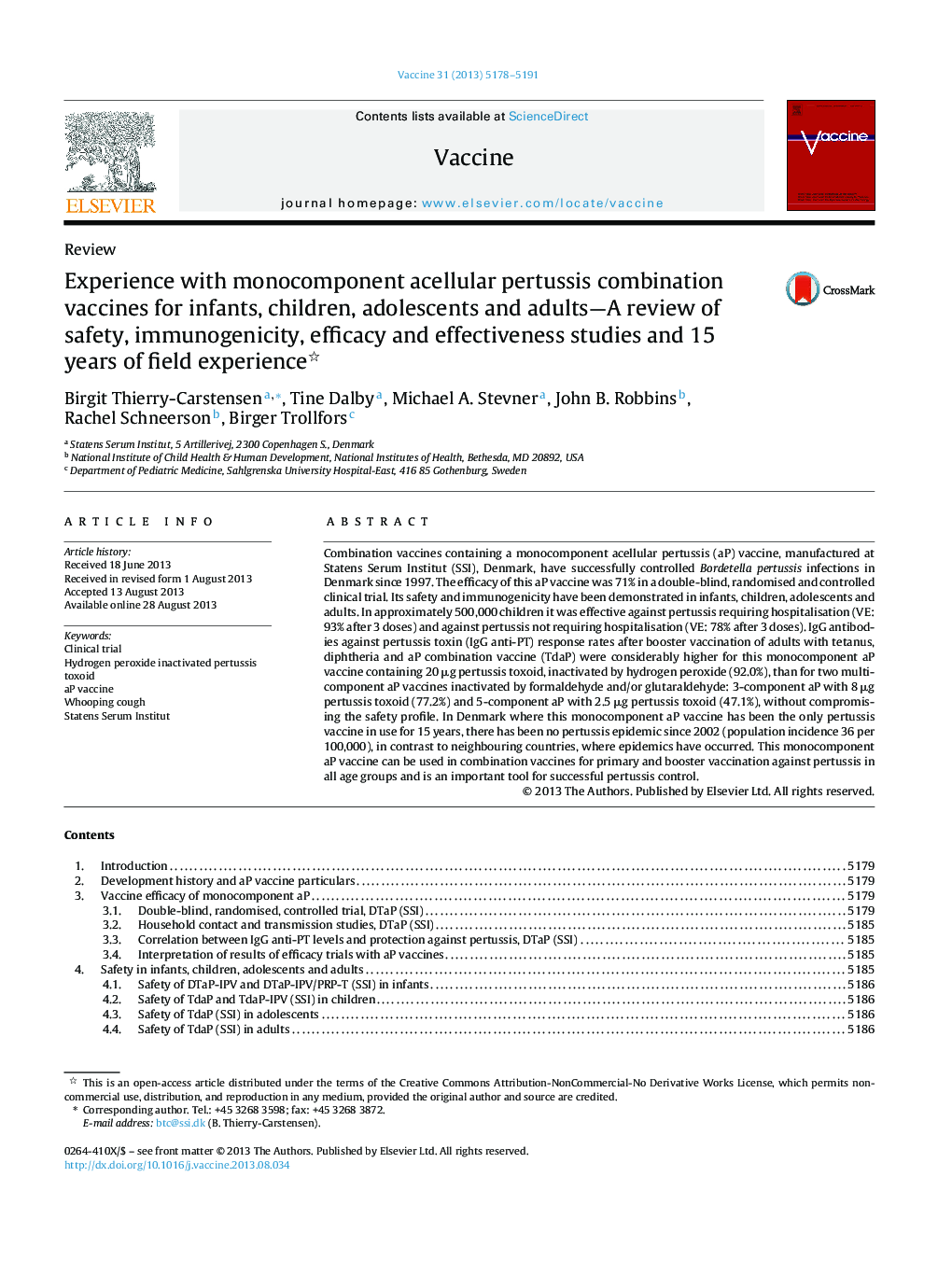| Article ID | Journal | Published Year | Pages | File Type |
|---|---|---|---|---|
| 10967548 | Vaccine | 2013 | 14 Pages |
Abstract
Combination vaccines containing a monocomponent acellular pertussis (aP) vaccine, manufactured at Statens Serum Institut (SSI), Denmark, have successfully controlled Bordetella pertussis infections in Denmark since 1997. The efficacy of this aP vaccine was 71% in a double-blind, randomised and controlled clinical trial. Its safety and immunogenicity have been demonstrated in infants, children, adolescents and adults. In approximately 500,000 children it was effective against pertussis requiring hospitalisation (VE: 93% after 3 doses) and against pertussis not requiring hospitalisation (VE: 78% after 3 doses). IgG antibodies against pertussis toxin (IgG anti-PT) response rates after booster vaccination of adults with tetanus, diphtheria and aP combination vaccine (TdaP) were considerably higher for this monocomponent aP vaccine containing 20 μg pertussis toxoid, inactivated by hydrogen peroxide (92.0%), than for two multicomponent aP vaccines inactivated by formaldehyde and/or glutaraldehyde: 3-component aP with 8 μg pertussis toxoid (77.2%) and 5-component aP with 2.5 μg pertussis toxoid (47.1%), without compromising the safety profile. In Denmark where this monocomponent aP vaccine has been the only pertussis vaccine in use for 15 years, there has been no pertussis epidemic since 2002 (population incidence 36 per 100,000), in contrast to neighbouring countries, where epidemics have occurred. This monocomponent aP vaccine can be used in combination vaccines for primary and booster vaccination against pertussis in all age groups and is an important tool for successful pertussis control.
Keywords
Related Topics
Life Sciences
Immunology and Microbiology
Immunology
Authors
Birgit Thierry-Carstensen, Tine Dalby, Michael A. Stevner, John B. Robbins, Rachel Schneerson, Birger Trollfors,
